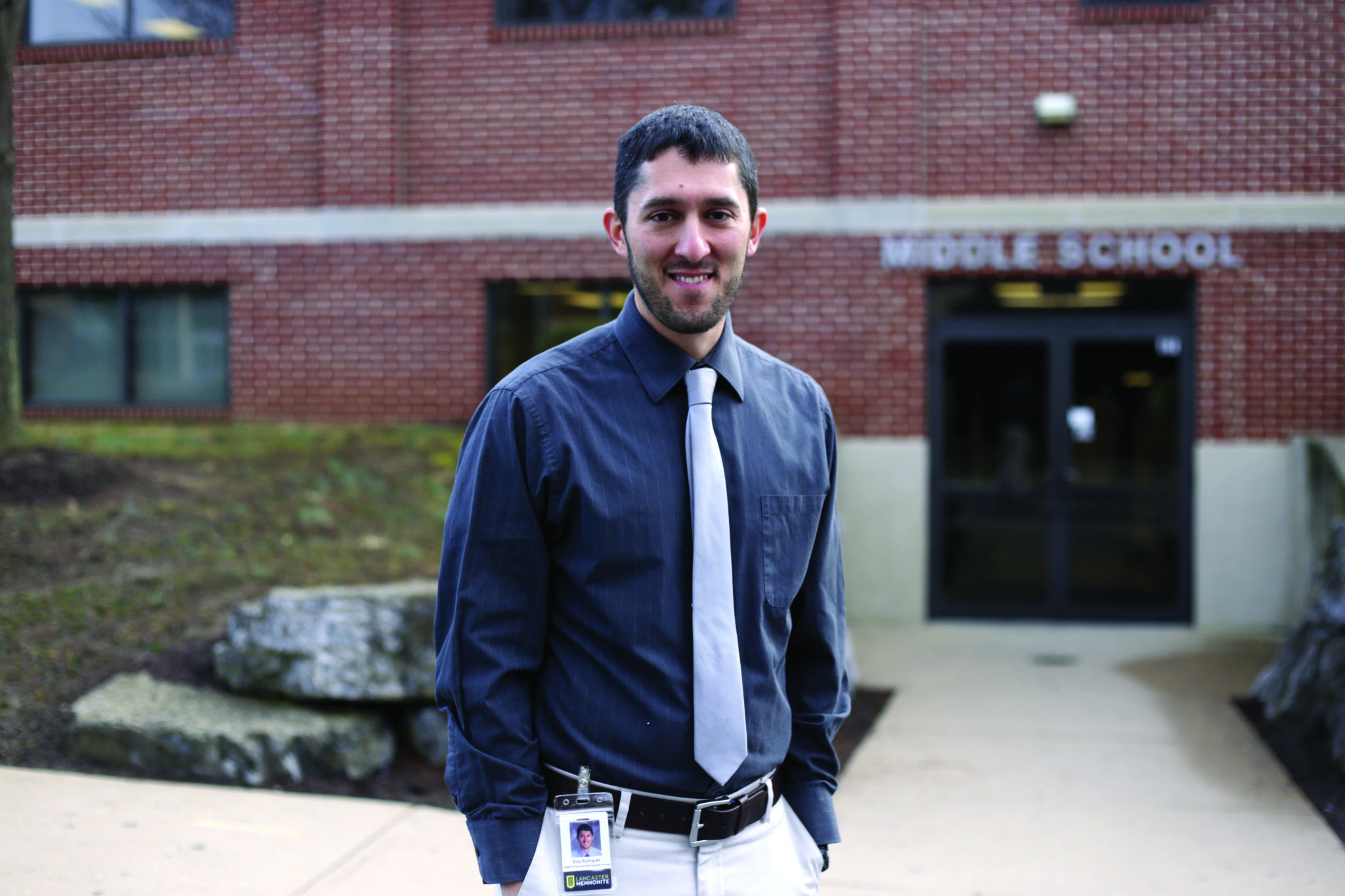Posted

Article by: ELOY RODRIGUEZ, PRINCIPAL LMMS & ASSISTANT PRINCIPAL LMH
Article originally in Bridges Spring ’19 edition
LAST WEEK I WALKED INTO our Design Lab at Lancaster Mennonite Middle School and this is what I saw: Small groups of 3-4 students spread out around the lab collaborating, designing, troubleshooting, problem solving, testing, re-testing, failing, and trying again, all with the goal of colonizing Mars.
The team in charge of food production on Mars were huddled over a fish tank, surrounded by pumps, tubes and a water test kit, designing a working hydroponics system that could be used in a Mars colony. Another group, in charge of transportation and exploration, is designing and coding a working Mars rover. Other groups are designing energy sources and deciding on the kind of government and living quarters the colony will have.
I thought back on my own experiences in middle school. An environment which primarily incorporated prolonged sitting at a desk and listening to teachers transfer information, memorizing dates and facts that I now no longer remember, with a shop class thrown in here and there where we could actually do things with our hands, but were not always tied to authentic, “real world” experiences. The soft skills of collaboration, communication, problem solving, adaptability, resilience, and critical thinking were almost nonexistent.
In a recent article published by the Harvard Business Review titled “The Story of Sustainability in 2018: We Have About 12 Years Left,” Andrew Winston writes of 12 big themes that have emerged in significant ways in relation to what humans are doing to the planet. This comes at a crucial time in our history as a monumental study from the Intergovernmental Panel on Climate Change (IPCC) has recently been published, stating that to avoid some of the most devastating impacts of climate change, the world must slash carbon emissions by 45% by 2030 and completely decarbonize by 2050. The sustainable solutions that he suggests will take more problem solving, critical thinking, adaptability, and collaboration than our world has ever needed.
In the future, big, essential questions will need answers – these solutions will most likely come from what are now 11-13 year-olds.
The answer to these questions will shape the lives of the students in our classrooms and impact a generation of students who in many ways have lost the ability to think critically, persevere through tough problems, collaborate and communicate with a diverse group of peers, and work through the design process to practice answering real world problems.
As I looked around at the groups of students in our design lab that morning, I was inspired by what I saw. I realized that, although not perfectly, this is exactly what we are doing through our Project-Based Learning program. A diverse group of students from all learning styles are engaging in real world problems and developing the skills to begin to try and answer them. Our theme titles this year are “Civilizations,” “To Infinity and Beyond,” “Words Matter,” and “You Are What You Eat.” Each of these quarter themes challenge students to grapple with issues that impact them on a daily basis, all while pushing them to come up with the solutions that may just be what we need to make our world a more sustainable place.
My challenge to us as educators is to find ways for our students to engage with these 21st century soft skills, skills that employers and the world are begging for, and put them into practice during the school day. Now, more than ever before, project-based learning is one of the best ways to engage young minds in the world. Because who knows, it may just be that 11 or 12 year-old sitting in your classroom that comes up with that next
innovation that changes the world.
